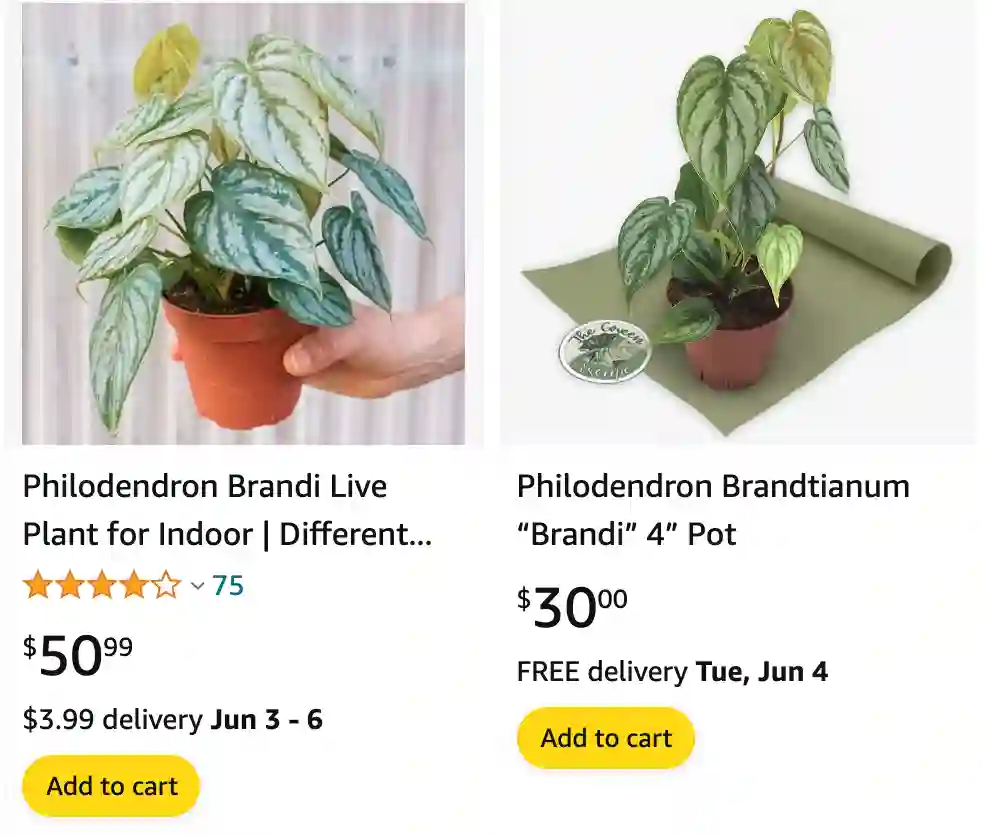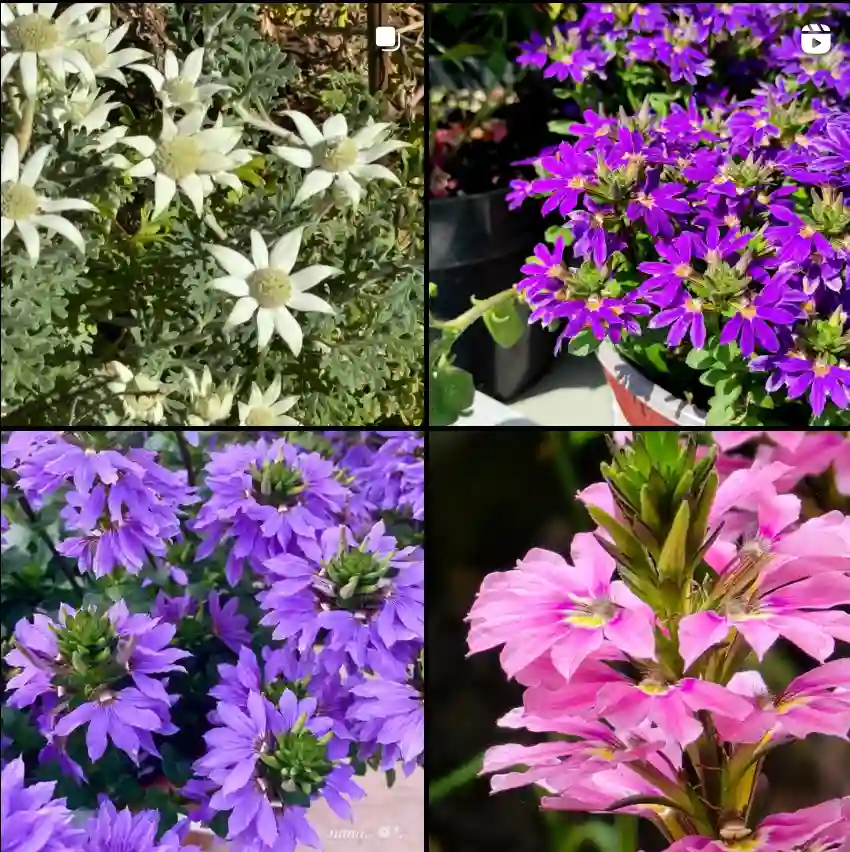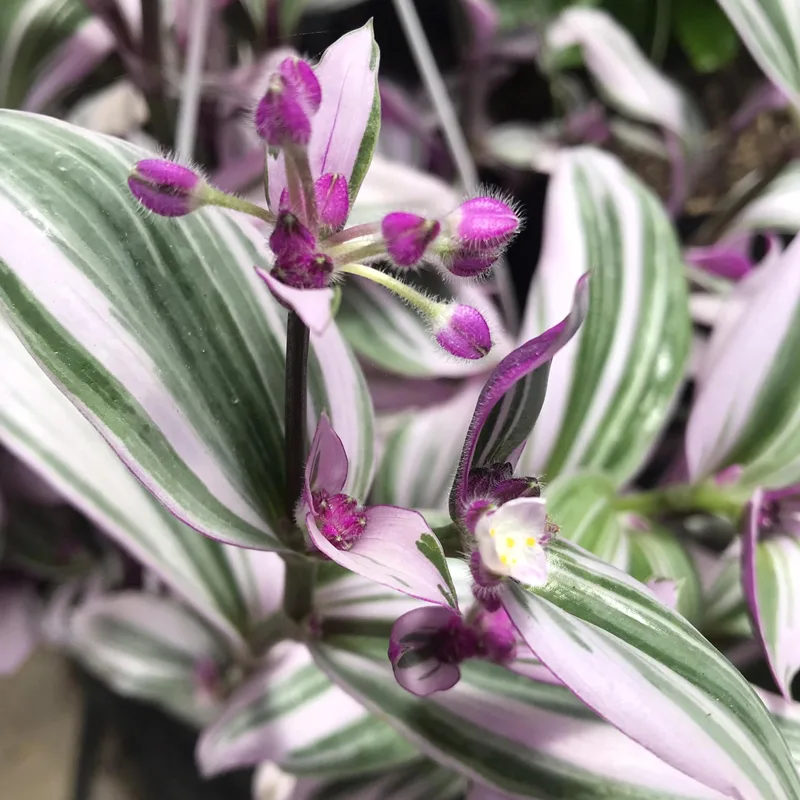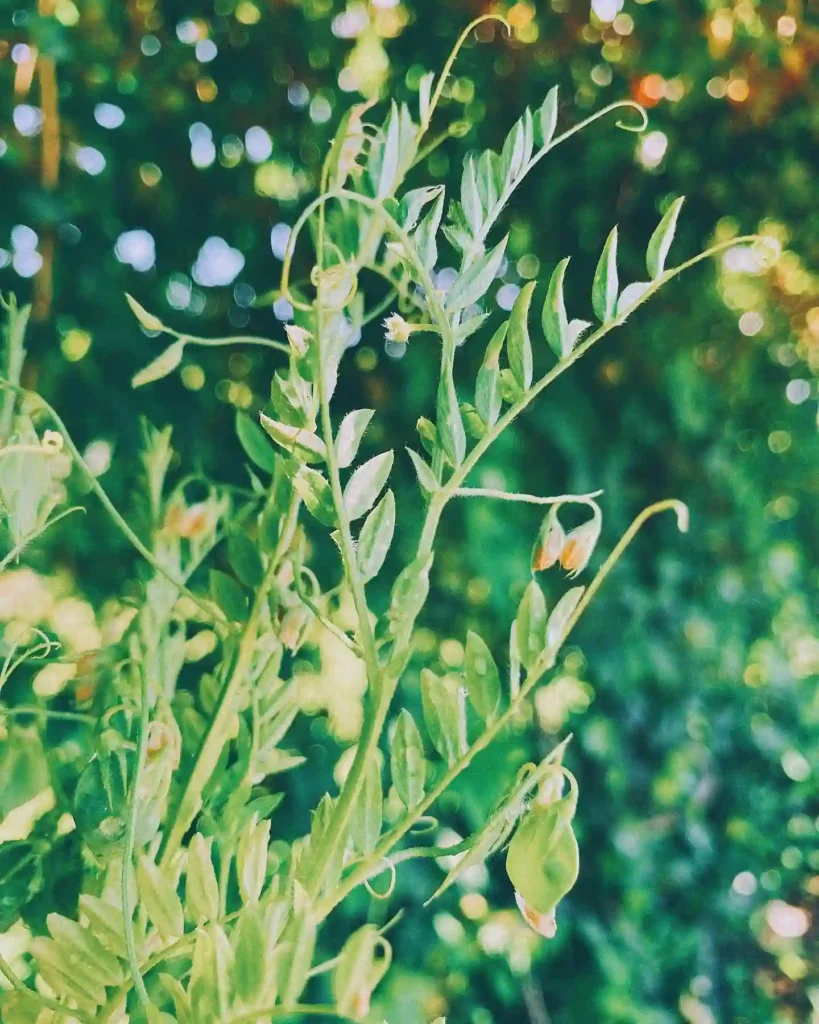
1. Introduction to Philodendron Brandtianum: The Silver Leaf Beauty
1.1. What is Philodendron brandtianum?
The Philodendron brandtianum is a unique and highly appealing species within the Philodendron genus, instantly recognizable by its exceptionally distinct foliage. It is primarily characterized by its heart-shaped leaves that are a dark green, liberally adorned with irregular splashes, bands, or speckles of shimmering silver or yellowish-green variegation. This unique patterning gives the leaves a sophisticated, almost metallic appearance, setting it apart from many other Philodendron species. Native to the humid tropical rainforests of South America, it is a vigorous vining plant that gracefully trails from hanging baskets or climbs up supports, making it a versatile and illuminating addition to any indoor plant collection.
1.2. Reasons for its Appeal
Philodendron brandtianum captivates plant enthusiasts for several compelling reasons:
- Striking Silver Variegation: Its unique silver or yellowish-green variegation against dark green foliage is highly aesthetic and visually distinctive.
- Heart-Shaped Leaves: The classic heart shape of its leaves adds to its universal appeal.
- Vigorous Vining Habit: As a natural viner, it readily trails or climbs, making it adaptable for various display methods (hanging baskets, shelves, moss poles).
- Collector’s Item: Its unique characteristics and somewhat limited availability contribute to its desirability among plant collectors.
2. Origins and Distinguishing Characteristics
2.1. Native Habitat
Philodendron brandtianum is indigenous to the tropical rainforests of South America, primarily found in countries like Brazil, Ecuador, and Peru. In its natural environment, it typically grows as an epiphytic vine, climbing up large trees to reach filtered light in the understory. It thrives in conditions of high humidity, consistent warmth, and dappled sunlight, utilizing its aerial roots to cling tightly to tree bark and absorb moisture and nutrients from the humid air and decaying organic matter. Understanding these native conditions is crucial for replicating an ideal indoor growing environment.
2.2. Leaf Morphology and Variegation
The leaves of Philodendron brandtianum are typically heart-shaped, glossy, and relatively small to medium-sized. The most defining characteristic is its unique variegation pattern:
- Silver/Yellowish-Green Splashes: The dark green base color is beautifully interrupted by irregular splashes, bands, or speckles of shimmering silver or yellowish-green. These lighter areas typically follow the veins or appear as large, distinct patches.
- Iridescence: The silver parts can have an almost iridescent quality, appearing to shimmer in certain light conditions.
- The leaves are generally entire (undivided) with the variegation being the primary ornamental feature.
2.3. Growth Habit and Rate
Philodendron brandtianum is a vigorous vining plant. It produces strong aerial roots that readily attach to rough surfaces, allowing it to ascend trees or other structures in its natural environment. Indoors, it will readily trail from a hanging basket or shelf, or it can be trained to climb a moss pole or trellis. Providing vertical support is highly recommended as it encourages the plant to produce larger, more mature leaves and a more robust growth habit. Its growth rate is generally moderate to fast under optimal conditions, particularly during the warmer growing seasons.
2.4. Toxicity
Like most other Philodendron species, Philodendron brandtianum is considered toxic to pets (cats, dogs) and humans if ingested. It contains calcium oxalate crystals, which can cause irritation and swelling of the mouth, throat, and digestive tract, leading to discomfort, vomiting, and difficulty swallowing. It is advisable to keep this plant out of reach of pets and small children.
2.5. Comparison to Similar Philodendrons (Micans, Hastatum, Silver Sword)
Philodendron brandtianum is often confused with other variegated or silver-leaved Philodendrons due to its similar coloration or common names.
- Philodendron brandtianum: Characterized by heart-shaped leaves with distinct silver/yellowish-green variegation in irregular bands/splashes. It is a vining/trailing Philodendron.
- Philodendron hederaceum ‘Micans’: Features velvety, iridescent leaves in shades of deep green, bronze, or purple, often with a reddish underside. It lacks the distinct silver variegation pattern of P. brandtianum. It is also a vining plant.
- Philodendron hastatum (Silver Sword): Known for its long, sword-shaped leaves with a uniform silvery-blue or grey-green sheen. Unlike P. brandtianum, its leaves are not heart-shaped and the silver is typically a solid wash, not a patterned variegation. It is a climbing Philodendron.
- Scindapsus pictus (Satin Pothos): While also having heart-shaped leaves with silver variegation, Scindapsus pictus belongs to a different genus. Its silver patches are typically more matte and concentrated, and its growth habit is generally slower and less vigorous than P. brandtianum.
The distinct combination of its heart-shaped leaves and irregular, shimmering silver/yellowish-green variegation clearly distinguishes Philodendron brandtianum.
3. Comprehensive Care Guide: Nurturing Your Silver Leaf Philodendron
Cultivating a thriving Philodendron brandtianum involves providing consistent care that closely mimics its tropical origins, ensuring its unique beauty and robust health.
Table 1: Quick Care Guide for Philodendron Brandtianum
| Care Factor | Requirement Description |
|---|---|
| Light | Bright, indirect light (e.g., East/North window, filtered South/West). Avoid direct harsh sun. |
| Temperature | Ideal range: 18-27°C (65-80°F). Protect from cold drafts. |
| Humidity | High humidity (60% or higher preferred). Essential for pristine leaves. |
| Watering | Water when top 1 inch of soil is dry. Allow partial drying. Ensure good drainage. Avoid overwatering. |
| Soil | Well-draining, airy, rich, organic mix (aroid mix, or potting soil + perlite + orchid bark). |
| Fertilization | Balanced liquid fertilizer, diluted by half, every 4-6 weeks in spring/summer. Withhold in fall/winter. |
| Pruning | Remove yellow/damaged/leggy leaves, prune for shape. |
| Repotting | Every 1-2 years, or when root-bound, in spring. Increase pot size slightly. |
| Support | Provide a moss pole/trellis if climbing, or allow to trail. |
3.1. Light Requirements
Philodendron brandtianum thrives in bright, indirect light. This is crucial for it to develop and maintain its vibrant silver variegation and promote healthy growth. Place your plant near a window that receives plenty of ambient light but is shielded from harsh direct sunbeams, especially during the midday and afternoon hours. East or north-facing windows are often ideal. For south or west-facing windows, use a sheer curtain to diffuse intense light or place the plant a few feet away from the window. Direct sunlight can easily scorch its delicate variegated leaves, leading to irreversible brown spots and dulling its shimmering color. Conversely, insufficient light can lead to slower growth, smaller leaves, leggy stems, and a less prominent silver variegation. Regularly rotating the plant ensures even light exposure and balanced growth.
3.2. Temperature and Humidity
As a plant from warm, humid climates, Philodendron brandtianum prefers consistently warm temperatures, ideally ranging from 18-27°C (65-80°F). It’s crucial to protect it from cold drafts and sudden temperature fluctuations, as temperatures below 15°C (59°F) can stress the plant, slow growth, and cause leaf damage. Avoid placing the plant near open doors, air conditioning vents, or heating units.
Philodendron brandtianum appreciates high humidity levels (60% or higher) is ideal. Optimal growth and pristine leaf appearance, especially for the silver variegation, are achieved with higher moisture levels. Signs of insufficient humidity might include crispy brown leaf edges or tips, or new leaves struggling to unfurl properly and becoming distorted. You can increase humidity by using a room humidifier, placing the pot on a pebble tray filled with water (ensuring the pot itself doesn’t sit in the water), or grouping the plant with other moisture-loving plants to create a humid microclimate. Regular misting can provide a temporary boost.
3.3. Watering Practices
Proper watering is critical for Philodendron brandtianum. It prefers its soil to dry out partially between waterings to prevent root rot. Water thoroughly when the top 1 inch (2.5 cm) of soil feels dry to the touch. Ensure that the pot has excellent drainage holes and that any excess water drains out completely from the bottom. Never allow the plant to sit in standing water, as this is the primary cause of root rot. Overwatering is a common mistake.
The frequency of watering will depend on environmental factors like light, temperature, and humidity, as well as the pot size and soil mix. Expect to water more often during the warmer, active growing months (spring and summer), typically weekly. During the cooler, dormant months of fall and winter, reduce watering frequency significantly, allowing the soil to dry out more thoroughly between waterings. Drooping leaves can indicate both underwatering and overwatering (due to root damage).
3.4. Optimal Soil Mix and Repotting
A well-draining, airy, and nutrient-rich potting mix is essential for Philodendron brandtianum. This mimics the loose, organic matter it would find in its native epiphytic environment. An ideal mix should promote good aeration while retaining sufficient moisture. A suitable blend, often referred to as an “aroid mix,” can include:
- High-quality indoor potting mix (approximately 50%)
- Perlite or pumice (approximately 20-30%) for excellent drainage and aeration
- Orchid bark (approximately 20-30%) for chunkiness and improved air circulation
Repotting: Repot your Philodendron brandtianum typically every 1-2 years, or when you notice it has become root-bound (roots growing out of drainage holes, water running straight through the pot too quickly, stunted growth). Spring is the best time to repot, as the plant is entering its active growth phase. Choose a new pot that is only 1-2 inches larger in diameter than the previous one, ensuring it has ample drainage.
3.5. Fertilization Strategies
During its active growing season (spring and summer), fertilize your Philodendron brandtianum every 4-6 weeks with a balanced, water-soluble fertilizer diluted to half strength. This provides the necessary nutrients to support vigorous growth and maintain its vibrant variegation. Reduce or completely stop fertilizing during the fall and winter months when the plant’s growth naturally slows. Over-fertilization can lead to salt buildup in the soil, which can burn the roots and cause leaf damage (e.g., crispy brown tips). Always water the plant thoroughly before applying fertilizer to protect the roots.
3.6. Pruning and Maintenance
Regular pruning is beneficial for Philodendron brandtianum to maintain its desired shape, encourage bushier growth, and remove any unhealthy foliage. Trim away any yellowing, dead, or leggy growth using clean, sharp scissors or pruning shears. Pruning can be done during the active growing season. Regularly wipe the leaves with a damp cloth to remove dust, which improves the plant’s ability to photosynthesize and keeps the variegation looking crisp. Providing a moss pole, trellis, or other climbing support is highly recommended as it is a climbing plant that benefits from vertical growth, leading to larger and more robust leaves.
4. Propagation Techniques: Expanding Your Collection
Propagating Philodendron brandtianum is a straightforward and rewarding way to create new plants. The most common and effective method is using stem cuttings. The best time for propagation is during the spring or early summer when the plant is actively growing.
4.1. Stem Cuttings
- Select a Healthy Stem: Choose a healthy, mature stem section that has at least one node (the bump on the stem where a leaf or aerial root emerges) and preferably one or two healthy leaves. Crucially, select a section that includes both green and silver/yellowish-green variegated parts to ensure the new plant inherits the desired pattern.
- Sterilize Tools: Always use clean, sharp, and sterilized pruning shears or a knife to make your cuts. This prevents the spread of diseases.
- Make the Cut: Cut the stem just below a node. Remove any lower leaves that would be submerged in your chosen rooting medium to prevent rot.
- Rooting Hormone (Optional): Applying a rooting hormone (powder or gel) to the cut end can stimulate faster and more robust root development.
- Rooting Medium Options:
- Water Propagation: Place the cutting in a clear jar with fresh water, ensuring the node is fully submerged. Change the water every few days to keep it clean and prevent bacterial growth. Roots typically begin to form within a few weeks.
- Sphagnum Moss: Plant the cutting in moist, but not soggy, sphagnum moss. This medium provides excellent aeration and moisture retention, often leading to robust root development.
- Soil: You can also plant the cutting directly into a small pot filled with a well-draining, airy potting mix suitable for aroids. Keep the soil consistently moist but not soggy.
- Provide Optimal Environment: Place your cuttings in a warm location that receives bright, indirect light. High humidity (e.g., within a propagation box or covered with a clear plastic bag to create a mini-greenhouse effect) will significantly accelerate the rooting process.
- Potting Up: Once the roots are a few inches long (for water or moss propagation), or significant new leaf growth is visible (for soil propagation), your new plant is ready to be transitioned to a larger pot with its permanent potting mix.
5. Troubleshooting Common Issues: Pests, Diseases, and Environmental Stress
While generally robust, Philodendron brandtianum can encounter a few common problems if its specific care requirements are not met. Prompt identification and action are crucial for maintaining its health.
Table 2: Common Problems & Troubleshooting for Philodendron Brandtianum
| Problem | Symptoms | Solutions/Treatment |
|---|---|---|
| Yellowing Leaves | Older, lower leaves turning yellow. | Overwatering (most common), insufficient light, nutrient deficiency, natural aging. Adjust watering, fertilize, check roots for rot. |
| Brown Crispy Edges/Tips | Leaves browning and feeling crispy at edges, especially variegated parts. | Low humidity, underwatering, direct sun exposure. Increase humidity, adjust watering, move to indirect light. |
| Drooping Leaves | Leaves losing turgor, looking limp. | Underwatering (most common), severe overwatering (root rot), cold shock. Check soil moisture, inspect roots, ensure warmth. |
| Fading/Less Variegation | Silver splashes become duller or smaller, new leaves greener. | Insufficient bright indirect light. Move to brighter spot. |
| Leggy Growth | Long stems with sparse leaves. | Insufficient light. Move to brighter location. Prune to encourage bushier growth. |
| Pest Infestations | Visible pests (mealybugs, spider mites, thrips, scale), sticky residue, distorted growth. | Isolate plant, treat with insecticidal soap, neem oil, or appropriate pesticides. |
| Root Rot | Mushy stem base, black/brown, foul-smelling roots, yellowing/wilting. | Overwatering, poor drainage. Repot, trim rotten roots, improve drainage, reduce watering. |
| Fungal Leaf Spot | Various spots on leaves. | Improve air circulation, reduce humidity if too high, remove affected leaves. Fungicides if severe. |
5.1. Watering Issues
- Overwatering: This is the most common cause of problems. Symptoms include yellowing leaves (particularly older, lower ones), black/brown spots on leaves, a mushy stem near the soil line, and a foul, moldy smell from the soil. This eventually leads to root rot.
- Solution: Allow the top 1 inch (2.5 cm) of soil to dry out completely between waterings. Ensure the pot has excellent drainage. If root rot is suspected, unpot the plant, trim any rotted, mushy roots, and repot in fresh, well-draining soil. Reduce watering frequency.
- Underwatering: Symptoms include drooping or curled leaves, crispy brown edges or tips, and overall dull foliage. The plant may visibly droop when thirsty.
- Solution: Increase watering frequency. Ensure you are watering thoroughly so that water drains from the bottom of the pot, indicating the entire root ball has been moistened.
5.2. Light Issues
- Insufficient Light: Can lead to slower growth, smaller leaves, leggy stems (long gaps between leaves on the stem as it stretches for light), and a significant fading or loss of silver variegation.
- Solution: Move the plant to a location that receives bright, indirect light. Consider supplementing with a grow light if natural light levels are consistently low.
- Too Much Direct Light: Harsh direct sun, especially during midday, can cause leaf scorch. The variegated areas are particularly sensitive. Symptoms include brown, crispy patches or a faded appearance on the leaves.
- Solution: Relocate the plant to a spot with filtered light, or use sheer curtains to diffuse intense sunlight.
5.3. Humidity and Temperature Stress
- Low Humidity: Often causes the leaf edges or tips to turn brown and crispy, particularly on the variegated sections. New leaves might struggle to unfurl properly and could become distorted.
- Solution: Increase ambient humidity using a humidifier, pebble tray, or by grouping plants together.
- Cold Stress: Exposure to temperatures below 15°C (59°F) can severely stress the plant, leading to leaf damage, wilting, and overall decline.
- Solution: Ensure the plant is in a consistently warm environment (18-27°C is ideal) and protected from cold drafts from windows or air vents.
5.4. Pests
Common houseplant pests like mealybugs, spider mites, thrips, and scale can occasionally infest Philodendron brandtianum.
- Symptoms: Visible insects (mealybugs with white, cottony masses; spider mites with fine webbing; thrips with silver streaks and black frass; scale with hard, immobile bumps), sticky residue (honeydew), or speckled, distorted leaves.
- Solution: Regularly inspect your plant, especially the undersides of leaves and stem crevices. Isolate infested plants immediately. Treat with appropriate organic pest control methods such as insecticidal soap, neem oil, or by wiping pests off with an alcohol-dipped cotton swab. Increasing humidity can help deter spider mites.
5.5. Diseases
- Root Rot: This is a serious fungal disease, almost always a result of overwatering and poorly draining soil.
- Symptoms: Yellowing, wilting leaves (even when the soil is wet), a mushy stem near the soil line, and black/brown, foul-smelling roots.
- Solution: Immediately remove the plant from its pot. Carefully inspect the roots and prune away all affected (mushy, black) sections with sterilized shears. Repot the plant in fresh, well-draining aroid mix, and adjust your watering schedule to allow the soil to dry adequately between waterings.
- Fungal Leaf Spot: Can appear as various spots on the leaves.
- Solution: Improve air circulation around the plant, reduce overly high humidity, and remove affected leaves. Fungicides may be used in severe cases.
6. Conclusion: Enjoying Your Thriving Philodendron Brandtianum
Philodendron brandtianum, with its striking silver-patterned foliage and graceful vining habit, is a truly captivating and rewarding plant to cultivate. By consistently providing it with bright, indirect light, appropriate watering, high humidity, stable warm temperatures, and a well-draining, airy soil mix along with suitable climbing or trailing support, you can ensure your P. brandtianum thrives. While it demands attention to its specific needs, the reward of nurturing its unique beauty and watching its shimmering leaves unfold will bring immense satisfaction and a distinctive touch of tropical elegance to your indoor space.
If i die, water my plants!



